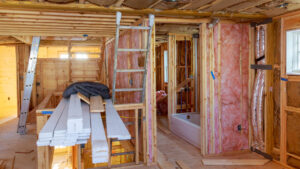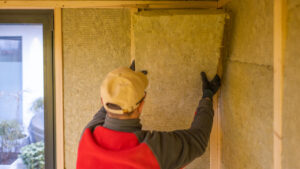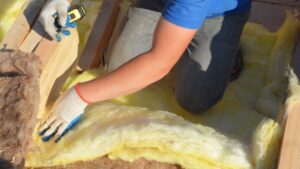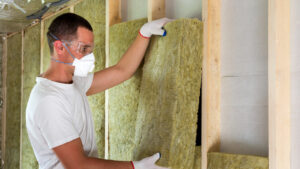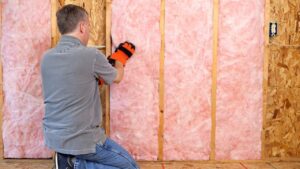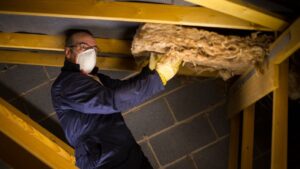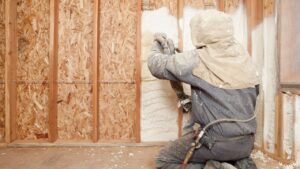Homeowners must prepare their homes for the harsh and humid weather. While most homeowners focus on heating systems and windows, the insulation under the home is often overlooked. Inadequate or damaged insulation can cause condensation damage, leading to costly repairs and replacements. Dampening the effect of condensation is a vital step in protecting under-home insulation. In this blog, we will discuss what the dampening effect is and provide 10 tips to prevent condensation damage to under-home insulation.
What is the Dampening Effect?
The dampening effect refers to the accumulation of moisture on the underside of insulation, resulting in a damp environment. This moisture buildup can cause various issues such as mold growth, wood rot, and corrosion. These issues can result in damage to the under-home structure, including the weakening of support beams, rusting metal pipes, and rotting floorboards. To prevent these problems, it’s crucial to take measures to avoid condensation damage to under-home insulation.
Importance of Preventing Condensation Damage
Condensation damage to under-home insulation can lead to significant problems, including structural damage, health issues, and financial loss. Moisture buildup can cause mold growth, which can trigger allergies, respiratory problems, and other health issues. Additionally, it can result in wood rot, rusting metal pipes, and weakened support beams. These issues can be expensive to repair and can decrease the value of your home. Therefore, preventing condensation damage is essential for maintaining a healthy and sturdy home.
Signs of Condensation Damage
It’s important to know the signs of condensation damage to under-home insulation in Newport News. Some of the most common signs include a damp or musty odor, water stains or damp spots on the floor or walls, and a decrease in insulation performance. If you notice any of these signs, it’s crucial to take action immediately to prevent further damage.
10 Tips to Prevent Condensation Damage to Under-Home Insulation
The following ten tips will help you prevent condensation damage to under-home insulation:
Tip #1: Install a Vapor Barrier
A vapor barrier is a material installed over the soil in the crawlspace to prev
ent moisture from entering the home. It’s typically made of plastic, foil, or other materials and can reduce moisture levels in the crawlspace, preventing condensation from forming on the underside of the insulation. Before installing a vapor barrier, it’s crucial to ensure that the crawlspace is free of debris and that any standing water or leaks have been addressed.
Tip #2: Properly Ventilate the Crawlspace
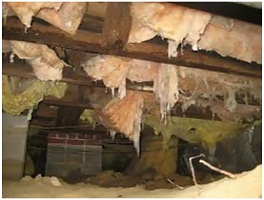
A well-ventilated crawlspace can prevent moisture buildup by allowing fresh air to circulate. Installing vents in the crawlspace walls or using a fan to blow air into the space can help keep moisture levels low. However, it’s essential to ensure that the vents are not blocked or covered, which can impede airflow and lead to moisture buildup.
Tip #3: Insulate Water Pipes
Water pipes running through the crawlspace can cause condensation to form on the insulation. Insulating the pipes can prevent this from happening, reducing the amount of moisture in the crawlspace. It’s essential to use high-quality insulation designed specifically for pipes and to ensure that the insulation covers the entire length of the pipe.
Tip #4: Use Closed-Cell Spray Foam Insulation
Closed-cell spray foam insulation is an excellent choice for under-home insulation because it provides a moisture barrier. The foam creates an airtight seal, preventing moisture from entering the insulation and reducing the chance of condensation forming. Closed-cell spray foam insulation also has a high R-value, which means it provides excellent insulation.
Tip #5: Replace Damaged Insulation
Damaged insulation can allow moisture to penetrate the insulation, leading to condensation damage. Replacing damaged insulation with new, high-quality insulation can help prevent moisture buildup and protect the under-home structure. It’s crucial to inspect the insulation regularly for signs of damage, such as tears or holes, and to replace any damaged sections promptly.
Tip #6: Use Insulation with a High R-Value
Insulation with a high R-value provides better insulation and helps prevent moisture from entering the crawlspace. Choosing insulation with a high R-value can help keep the crawlspace dry, reducing the chance of condensation forming. It’s essential to ensure that the insulation is installed correctly and covers the entire under-home space.
Tip #7: Keep the Crawlspace Clean
A clean crawlspace can help prevent moisture buildup by reducing the chance of mold and mildew growth. Regularly cleaning the crawlspace can help prevent condensation damage to under-home insulation. It’s crucial to remove any debris or standing water from the crawlspace and to address any leaks or plumbing issues promptly.
Tip #8: Repair Leaks
Leaks in the roof or plumbing can allow moisture to enter the crawlspace, leading to condensation damage. Repairing leaks as soon as they’re detected can help prevent moisture buildup and protect under-home insulation. It’s essential to inspect the roof and plumbing regularly for signs of leaks, such as water stains or damp spots, and to address any issues promptly.
Tip #9: Install a Dehumidifier
Installing a dehumidifier in the crawlspace can help reduce moisture levels and prevent condensation damage to under-home insulation. Dehumidifiers work by removing excess moisture from the air, which can help keep the crawlspace dry. It’s essential to choose a dehumidifier that’s appropriately sized for the space and to ensure that it’s properly maintained.
Tip #10: Hire a Professional
Hiring a professional to inspect and maintain under-home insulation can help prevent condensation damage and ensure that the insulation is functioning correctly. A professional can perform a thorough inspection of the crawlspace, identify any issues, and provide recommendations for keeping the under-home structure protected. Additionally, a professional can perform regular inspections to ensure that the insulation is in good condition and functioning correctly.
In conclusion, dampening the effect of condensation is crucial for preventing damage to under-home insulation. By following these 10 tips, homeowners can keep their crawlspace dry and protect their under-home structure from condensation damage. A well-insulated home not only saves money on energy bills but also protects the home from potential damage caused by moisture buildup. Don’t overlook the importance of under-home insulation; take steps to protect it, and enjoy a warm, dry home all winter long. Contact us today to learn more about how we can help.

